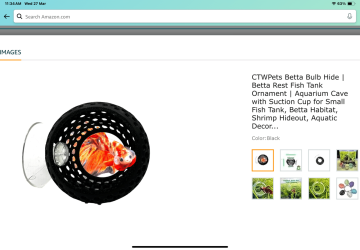I see the PVC pipe caves in lots of breeding tanks, & I understand that... but at this point, pretty much all my tanks are display tanks, & I wanted a more natural looking cave... I used to use rocks ( limestone slabs, back in my Rift Lake Cichlid days ) but most I'm doing lately have been for soft water tanks... I have used slate before, but those take up so much room in the tank, & slate is not locally available, the way the limestone was...
so I have been buying these... which I've been really happy with... they are cast resin, & look realistic enough, that on several, I have real driftwood, right next to these, & in one tank in particular, it just looks like the bark, fell off of the real driftwood next to it...
anyone else using a natural looking cave for display tanks... if so, what are you using???
so I have been buying these... which I've been really happy with... they are cast resin, & look realistic enough, that on several, I have real driftwood, right next to these, & in one tank in particular, it just looks like the bark, fell off of the real driftwood next to it...
anyone else using a natural looking cave for display tanks... if so, what are you using???
As an Amazon Associate we earn from qualifying purchases.



